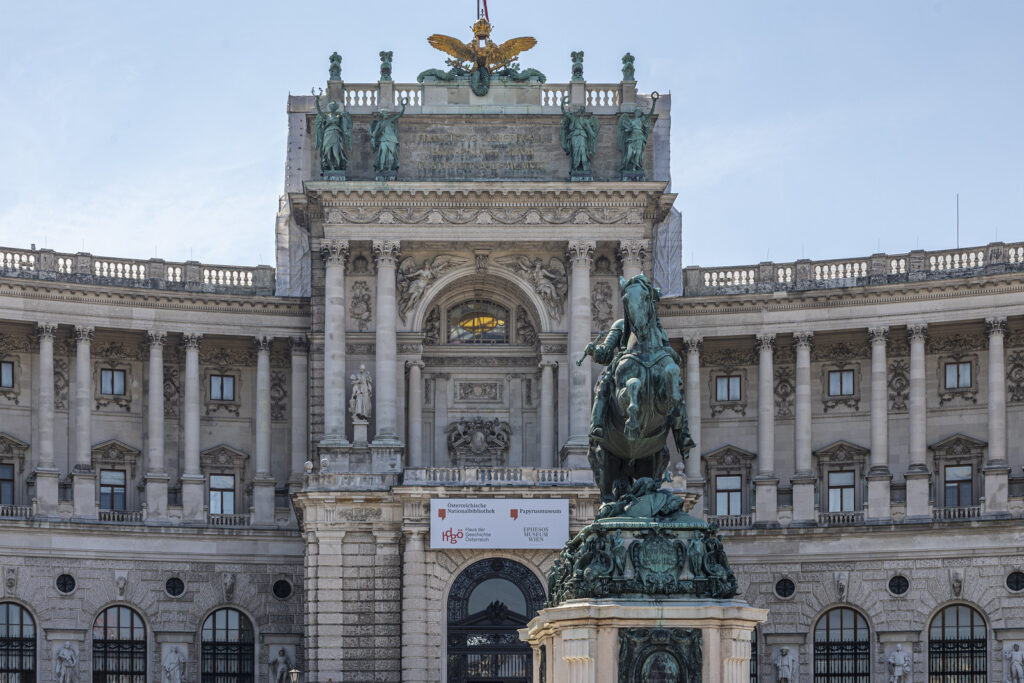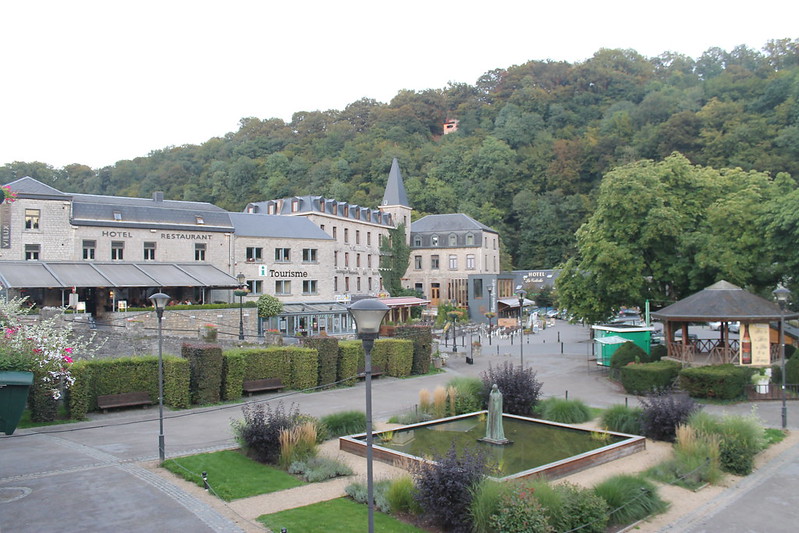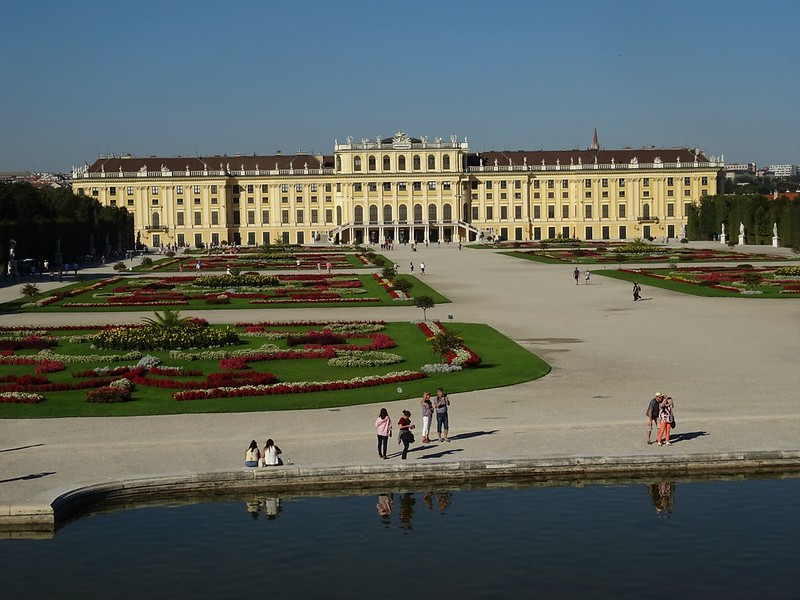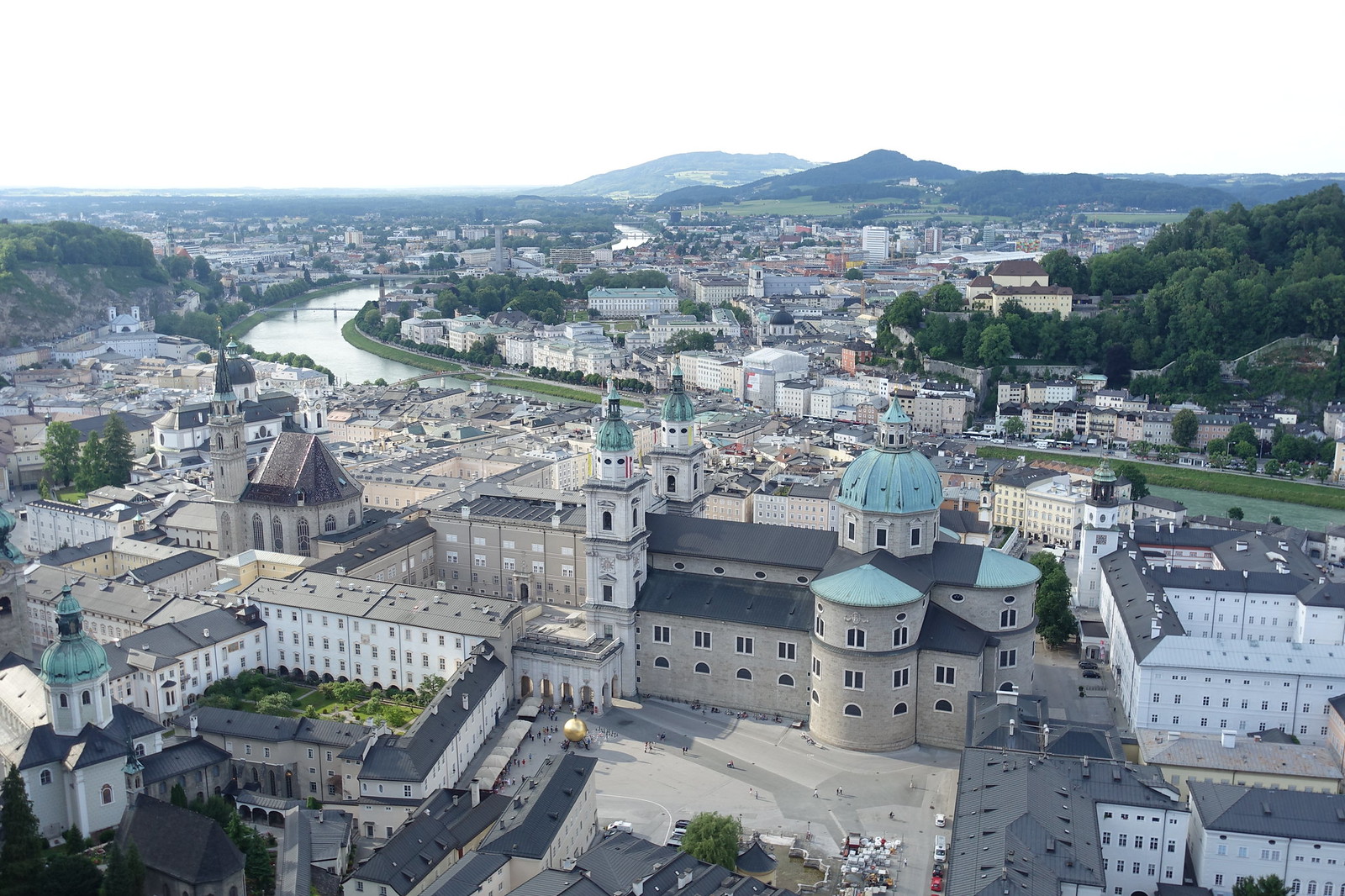
Vienna, the capital of Austria, surprised us by the number of interesting places it houses. It is worth spending a week to see everything at your leisure. Also, as an incentive, you can make a day trip to Bratislava (Slovakia), which is an hour away by train. If you are only going to stay for a weekend, maybe this list will make things a little easier for you. But you’ll have to choose. Here are our 10 must-see places in Vienna, randomly ordered, with links of interest, and with all suggestions located on a map.
- St. Stephen’s Cathedral and historical center
St. Stephen’s Cathedral (known as Stephansdom) is the most important religious symbol of Austria. The present Gothic building dates back to the 14th century, although the oldest parts date back to the 12th century. It stands out for its impressive exterior, with its bright tiles, its gargoyles, the 137m tower, the great Pummerin bell, and the porticoes. Inside are the tombs of several members of the Habsburg family, the ancient catacombs, the treasury, etc. The views from the towers are not to be missed.
The Stephansdom is located in the historical center of the city. You should not miss wandering through its streets or having a good coffee while listening to classical music in the background. Vienna’s old town has magic, and this was recognized by UNESCO when it was included in the list of World Heritage Sites in 2001.
- Hofburg Palace and Spanish Riding School
The Hofburg Imperial Palace, the residence of several generations of emperors and monarchs since the 13th century, is a huge complex of buildings with different functions. The general admission, with an audio guide or guided tour, includes the visit to the imperial halls, the interesting Sisi Museum (the famous empress), and the silverware. Of course, the most spectacular part of the visit is the imperial halls, where you can see about twenty Habsburg royal apartments. Today it is the official residence of the President of the Republic and one of the most visited places in Vienna.
In one of the buildings attached to the complex is the famous Spanish Riding School, an institution created in 1572 where dressage is practiced with Lipizzaner horses, whose first specimens came from Spain. There are different types of visits, including a guided tour, but the most popular is the morning training sessions (included in the Vienna PASS).
- Schönbrunn Palace and gardens
Listed as a World Heritage Site in 1996, the imposing Schoenbrunn Palace was used by the Habsburgs as a summer residence from its construction in 1701 until the demise of the monarchy in 1918. Inside there is an audio-guided tour through the various royal rooms, most of them decorated in rococo or Austrian baroque style. But equally or more interesting are the huge gardens, with a gigantic gazebo, a labyrinth, the fountain of Neptune, Roman ruins, a greenhouse (Orangerie), a French garden, the Children’s Museum, and so on. Some of these places must be paid for separately if you do not buy a full ticket.
In addition, there are two other outstanding tourist attractions on the palace grounds. The first one is the Tiergarten Schönbrunn, the oldest zoo in the world (founded in 1752). Today it has become one of the most modern and award-winning zoos in Europe. We are not at all zoo-friendly, but it is a relevant place nonetheless. Admission is included in the Vienna PASS.
Also in the gardens of Shönbrunn, you can visit the Imperial Carriage Museum, with a collection of more than 170 historic vehicles including the hearse of Sisi. Admission is included in the Vienna PASS.
- Belvedere Palace
The Belvedere Palace, built-in 1723 for Prince Eugene of Savoy, is divided into two palaces; Upper Belvedere and Lower Belvedere. Both are in baroque style and are separated by beautiful gardens. This palace complex is not as spectacular as the previous ones and you can only visit a few decorated rooms, but it is worth going there to enjoy the three museums it houses: the Gallery of Austrian Art (where you can see the famous “The Kiss” by Gustav Klimt) and the museums of Baroque and Medieval Art. Full admission is included in the Vienna PASS, but if purchased separately and time is short, better to opt only for the Upper Belvedere.
- Vienna Opera House
The capital of Austria is strongly linked to classical music. In the streets of the old town is very common to find musicians, references to great composers, commemorative plaques, statues with their figures, etc. The Vienna State Opera (1869), undoubtedly one of the most important symbols of the city, is among the most famous operas in the world. Tickets for performances must be booked well in advance (in the last few days you can only buy the most expensive ones), but if you cannot attend a performance there is the possibility to take a guided tour.
And if you are interested in classical music you should not miss other essential visits to Vienna, such as Mozart’s house, Beethoven’s house, Johann Strauss’ house, Schubert’s birth house, and the house where he died. All these house museums dedicated to famous classical composers are included in the Vienna PASS.
- Ringstrasse
The Ringstrasse (“ring street”) is one of the most important avenues of the city, both for its location, surrounding the city center, and for housing some of the most emblematic buildings of the capital. In addition to the aforementioned Opera House, it is home to two of Vienna’s most visited museums: the Kunsthistorisches Museum (Museum of Fine Arts) and the Naturhistorisches Museum (Natural History Museum). Both are located opposite each other, have an identical appearance, and were inaugurated at the end of the 19th century by Emperor Franz Joseph I.
The Kunsthirotisches (or KHM) houses collections of archeology, sculpture, applied arts, weapons, numismatics, and medals, although the most prominent section is the picture gallery. In this area you can see paintings by Jan van Eyck, Rubens, Bosch, Dürer, Raphael, Tintoretto, Velazquez, Vermeer, etc.. The Naturhistorisches (or NHMW), on the other hand, exhibits minerals, gems, meteorites, dinosaur fossils, stuffed animals, etc. With its 39 rooms and 100,000 objects, it is one of the largest natural history museums in the world.
Among the notable buildings on Ringstrasse are also the Parliament, the Rathaus (City Hall), the Burgtheater (Imperial Theater), or the University of Vienna.
- Karlskirche
The imposing Church of St. Charles Borromeo (Karlskirche), built-in 1739, is considered a masterpiece of Baroque eclecticism. It is easily recognizable by the two huge columns located on its main facade, inspired by the Trajan Column. On the outside, the Greek portico and the dome also stand out. Inside, the frescoes of the dome itself are one of the most remarkable elements, in addition to the views from above and the main altar. And, as in most churches in Vienna, the sacred concerts, with music by great classical composers, are very popular.
- Prater and the Danube
The Wiener Prater, the scene in 1873 of the Vienna World’s Fair, is the largest public park in the city. Its main attraction is undoubtedly the Wurstelprater (or simply Prater), the oldest amusement park in the world, which opened in 1766. The Vienna Ferris Wheel (Wiener Riesenrad), dating from 1897, is the Prater’s great icon and one of the city’s emblems. Of course, there are many more attractions, some classic and some more modern. Even if you do not plan to go on any of them, it is worth going there and watches the show since the entrance is free (you pay per attraction).
Within the grounds of the Prater, there are other places of interest such as the Ernst Happel Stadium (where Spain won the Euro ’08), the curious Republic of Kugelmugel, a racetrack, a narrow-gauge railroad, etc.
The Prater is quite close to the Danube, so it can be a good excuse to rent some bikes, ride around the park, and get close to its banks. In any case, the most interesting areas to enjoy the Danube are located in three distant points: the Danube Island, the Alte Donau, and the Danube Canal. More info here.
- Albertina Museum
Although it could be considered part of the Hofburg Palace, the Albertina is visited completely independently and deserves separate mention for being one of the most visited museums in the city. Its huge graphic collection (one of the largest in the world) highlights the works of Dürer and some key pieces of modernism. Among the most renowned authors are Schiele, Klimt, Kokoschka, and Picasso. Also notable are the works of French impressionism by Monet, Renoir, Cezanne, Matisse, etc.
- Hundertwasserhaus
If you get tired of the elegant Vienna of sumptuous palaces and grand buildings in classical style, we suggest you go to Hundertwasserhaus, a picturesque housing complex where creative architecture reigns. The Hundertwasserhaus was built by Friedensreich Hundertwasser in 1985. It is not possible to visit the interior, but it is enough to admire the irregular facades, colorful and dotted with vegetation, to be amazed by its originality.


